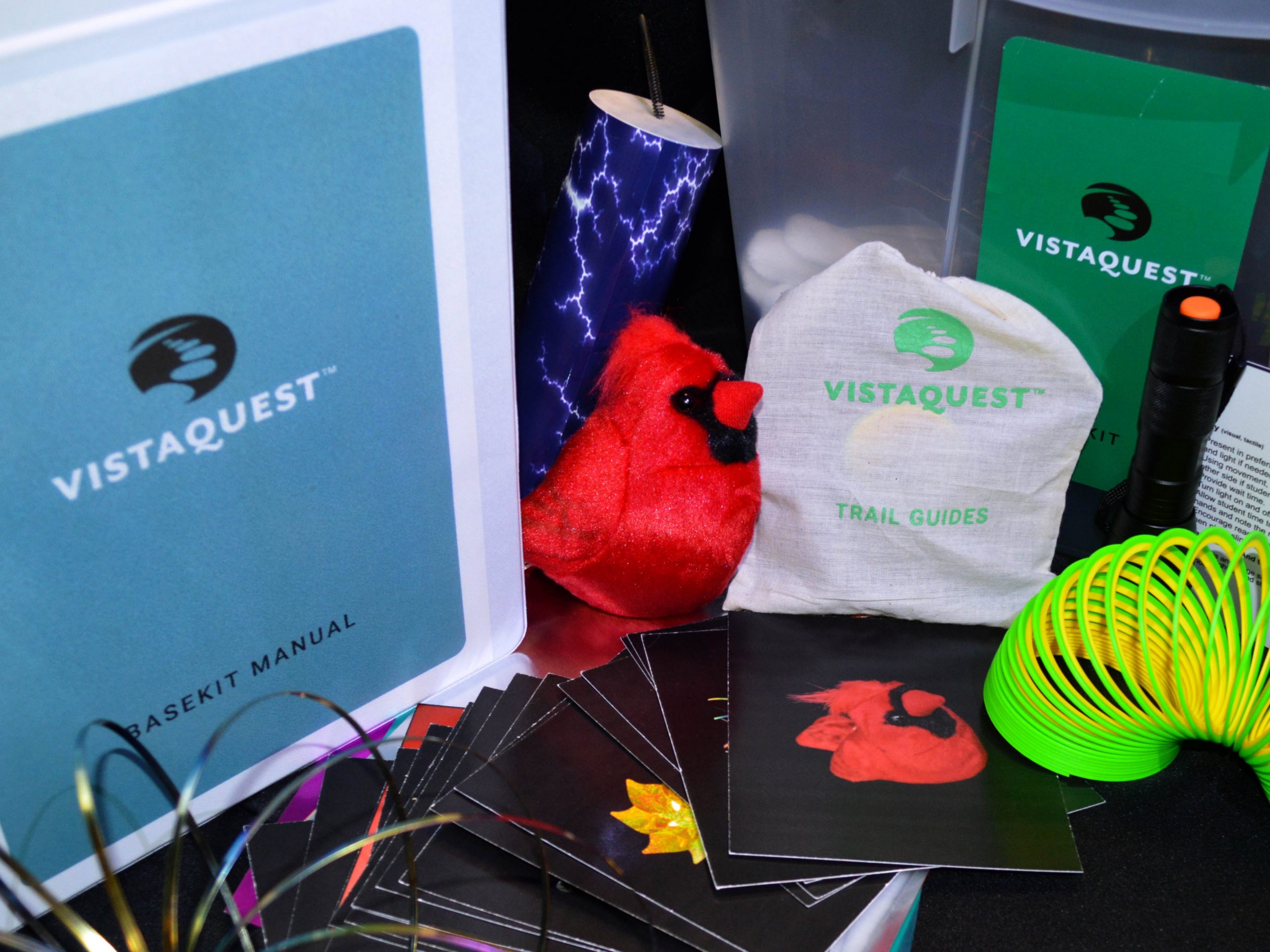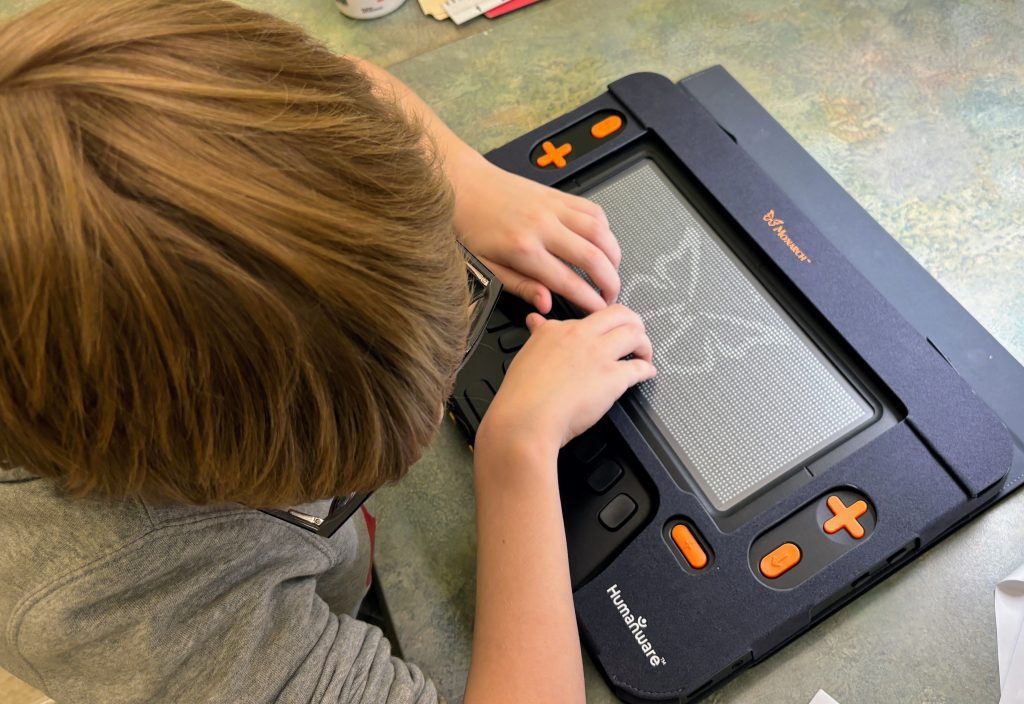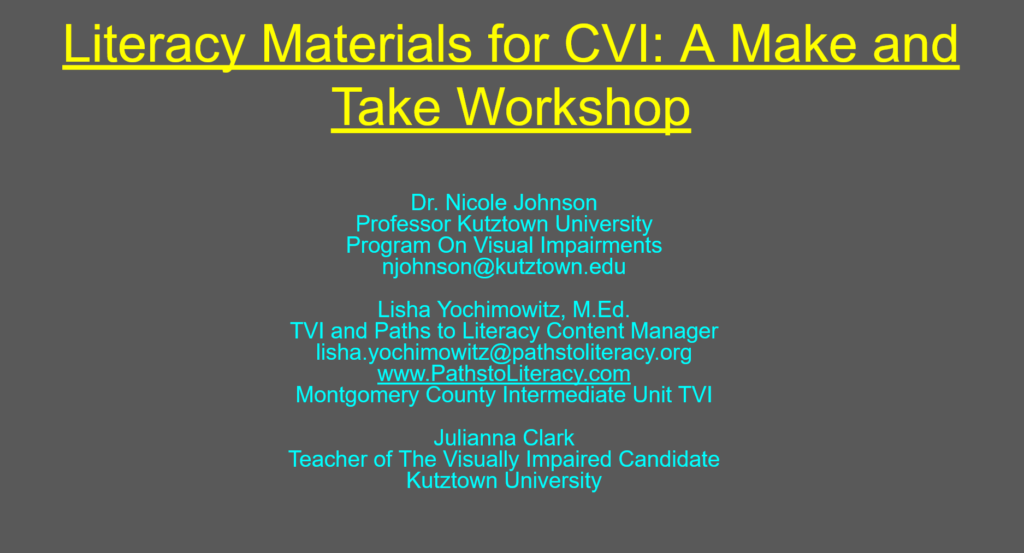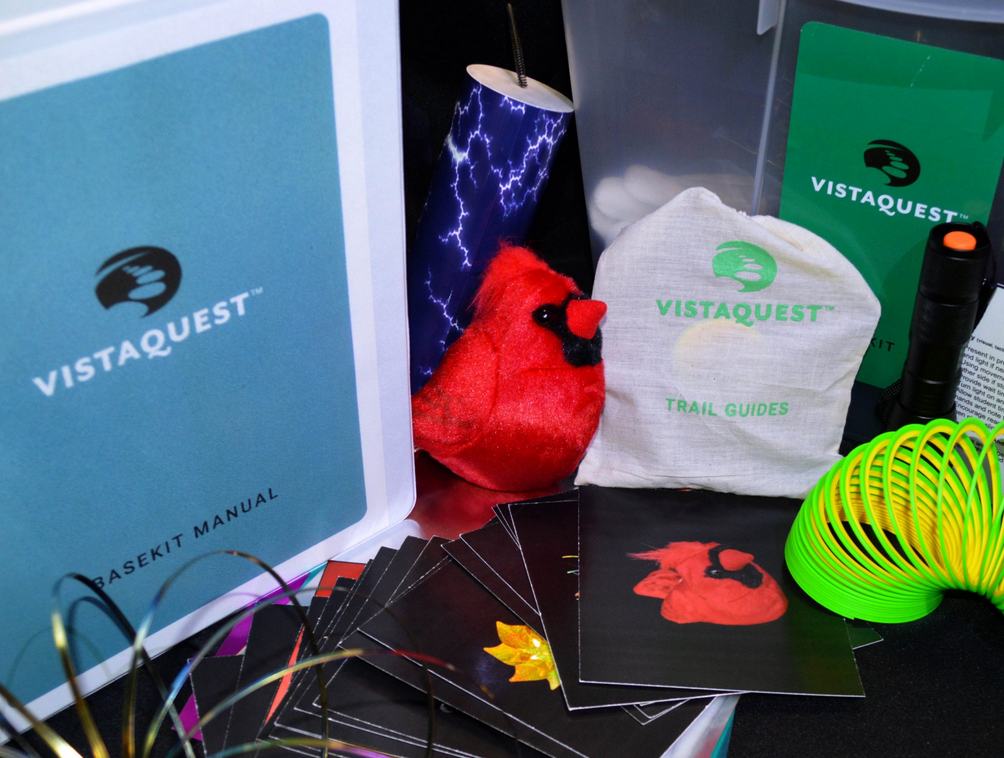Today I received a video and text message from the mother of one of my students.
The video showed my student, an 18 month old, laying on his back and reaching out with intention. I had brought a toy/tool of lighted balls that swing over the child several months earlier, and this was the first time he was intentionally reaching out and hitting the balls. During my initial home visit, his mom shared that given her child’s degree of neurological challenges and daily seizures, the doctors told her that her son would never be able to do things like this. He would never be able to see things. We have been working on building the basic neural pathways of being able to look at things and maintain one’s gaze for three seconds or more. Given that much time, the lateral geniculate nucleus in the thalamus is paying attention and visual information is making its way to the visual cortex. This brain information is just part of the process but not the whole process. That reaching to objects indicates some level of abilities in the dorsal stream as well. Watching this special little boy look at, reach, and hit these balls was progress in action!
Some progress isn’t quite so dynamic.
Another student, who is now 15 years old, has had a very different journey. This young woman was adopted at the age of 8 from an Eastern European country where she spent her life in a crib with little human interaction. She was only 9 pounds when she came to the United States, so the initial challenge for her parents and care team was to get her healthy and growing. Once assessed for CVI, her results showed a significant lack of visual behavior overall, placing her in Phase I of the CVI Range which we were using at that time. We started working on providing visual opportunities to encourage the development of her visual skills in all areas.
It has taken years, but she is now able to use her eye gaze to make choices (not to be confused with an eye gaze system). Her compensatory skills of listening, understanding basic concepts of cause and effect and object permanence, and even spatial awareness were also being developed throughout this time. The combination of all these skills has enabled her to be able to look at, understand, and process several items together. I love her story as it speaks to the fact that it is never too late for intervention!
To help in her communication, she has a PODD (Pragmatic Organization Dynamic Display) book where symbols and words are organized in a way that supports and encourages communication. It took over 2 years of patient repetitive work using this system beginning with partner assisted auditory support, and adding visual support. This visual support consisted of showing one symbol at a time and gradually adding two, then three symbols. The symbols ranged from photographs of familiar items to single bright colored symbols for those abstract words (stop, more, something different). Her book now consists of 12 symbols per page. The symbols in the first two pages can be taken off and shown separately if needed. We use two separate symbols for yes and no that are larger sized. When the symbols were first shown together in her book, we used an occluder highlighting the symbol we were talking about at that time. This enabled her to learn the organization of the book and where the symbols were located.
As we were building new neural pathways using these tools, there was initially no response. However, through repetition and consistent use these pathways were built. My student still relies heavily on the compensatory skill of listening in addition to looking. The team’s SLP continues to model how to use the book and talk through the pages as our student’s communication is supported through listening as well. But, she actively looks for the PODD book when she has something to say, and is very attentive when it is brought to her to share information or get her response. When she makes eye contact with you, you want to just freeze time and stay in that moment. Incredible progress and life changing!
I have another student where every visit with her can look different.
She has a seizure disorder along with a prolonged digestive issue, amid other diagnoses. Some days she is able to attend to objects shown to her, but there are days where she is uncomfortable and tired due to seizure activity earlier in the day, so she is unable to focus on anything. Going back to how the thalamus works, she is not able to pay attention and build those neural pathways when she is not feeling good physically. When I visit her and am able to see she will still look at objects, even for a few seconds, I consider it progress. It takes time and patience, especially as her family and medical team are working together to control her seizures and make her more comfortable.

Activities from the VistaQuest BaseKit continue to provide opportunities for visual pathways to be built at times she is feeling well. Continuing to provide these opportunities to use her vision, when she is feeling well and having her engage visually, is her definition of progress for now. As a team we have been working on how to build the activities into her routine in a way that provides these visual opportunities, but with meaning.
One example is including her brother in playing a “hide and seek” game with her and the red bird. When the red bird is found, her brother makes it tweet, which brings the response of a smile. She has now attached meaning to the red bird and visually recognizes it when it is presented to her. It is always important to remember to not just present objects to get a visual response, but to attach meaning to them so visual recognition takes place, which is where true learning takes place.
I keep top-of-mind the mantra that the ultimate goal of this work is to enable a quality of life as one interacts, understands, and communicates desires and feelings. This quality can be achieved using one’s vision, auditory, or tactile skills as the primary sensory modality.
As an example, I have worked with a 20 year old young man since he was in the 3rd grade. Despite intervention, he has not shown much visual improvement throughout the years. His visual diagnosis on top of CVI includes optic nerve atrophy where there is permanent damage with loss of nerve fibers and cells. There are often coexisting ocular issues with our students with CVI. These issues can include strabismus, amblyopia, optic nerve differences, ocular motor difficulties, nystagmus, and refractive errors, among others. All of these need to be kept in mind for how intervention is planned.
My direction in working with my student has been more of understanding how he uses his sensory modalities and following his lead as primarily an auditory learner. I still incorporate CVI strategies, for example providing a solid colored background when showing him an object, using light to highlight objects, and giving him time to look at an object. For example, he is drawn to very bright lights, so showing him the light-up roller against the black cloth (both items found in the BaseKit) provides him the access he needs to see the roller. After he has looked at the roller, we talk about it and then I ask his permission to roll it on his arm. When he gives me his smile, I roll it on his arm, and then we talk about how it felt. I give him another opportunity to look at the roller and then ask if he would like to feel it on his other arm, or his hand, etc., and wait. This is another example of how to build meaning into the activities we do with our students that builds visual attention along with visual recognition.
He is currently learning to use his own PODD book. His book looks different than the previous student I shared about as he is unable to access the 2D symbols, however he is able to respond by listening and making a sound or smile when he hears the words spoken that he wants to communicate as he relies on Partner Assisted Auditory Scanning. The opportunities to use vision remain present, however auditory processing has become his main pathway to communication. Progress for him is learning how to use his auditory skills to communicate. His team is working towards him being able to choose an activity between two choices and “something different”, as well as being able to let us know when he is done or if he wants to continue with an activity. One of the strengths of the BaseKit is that most activities are multi-sensory, so all students can benefit from them regardless of preference of sensory modality.
Overall, what does progress look like with our students? Is it primarily to be focused on visual skills? Just as each student is unique in how CVI affects them, unique in their intervention plan, they are also unique in what defines progress. There is no one-size fits all measurement of progress.
We have to take the whole-person into account. If we are focused solely on development of visual skills, there may be a lot of disappointments up ahead. As a TVI, it is the expectation that I am focused on developing and building vision, but we need to go beyond that. What happens when we get students who have diagnoses where there is permanent damage to the visual pathways in addition to CVI? We don’t always know if improvement will occur, or at what rate. We have to ask ourselves what is the ultimate purpose of our intervention? I believe we need to focus on how to provide access for our students, which is often a combination of visual and compensatory methods, to what is going on in their world in a way that is meaningful.
I have high expectations for my students that goes beyond developing visual skills to a better quality of life. A quality of life which includes being able to understand one’s world and interact with it, to exchange one’s thoughts, wishes, ideas with another, and to understand someone else as well as be understood by them. It involves being able to share how one is feeling and having the ability to make choices and say “yes” or “no”. Communication is powerful and something we should all strive to continually build up with our students.
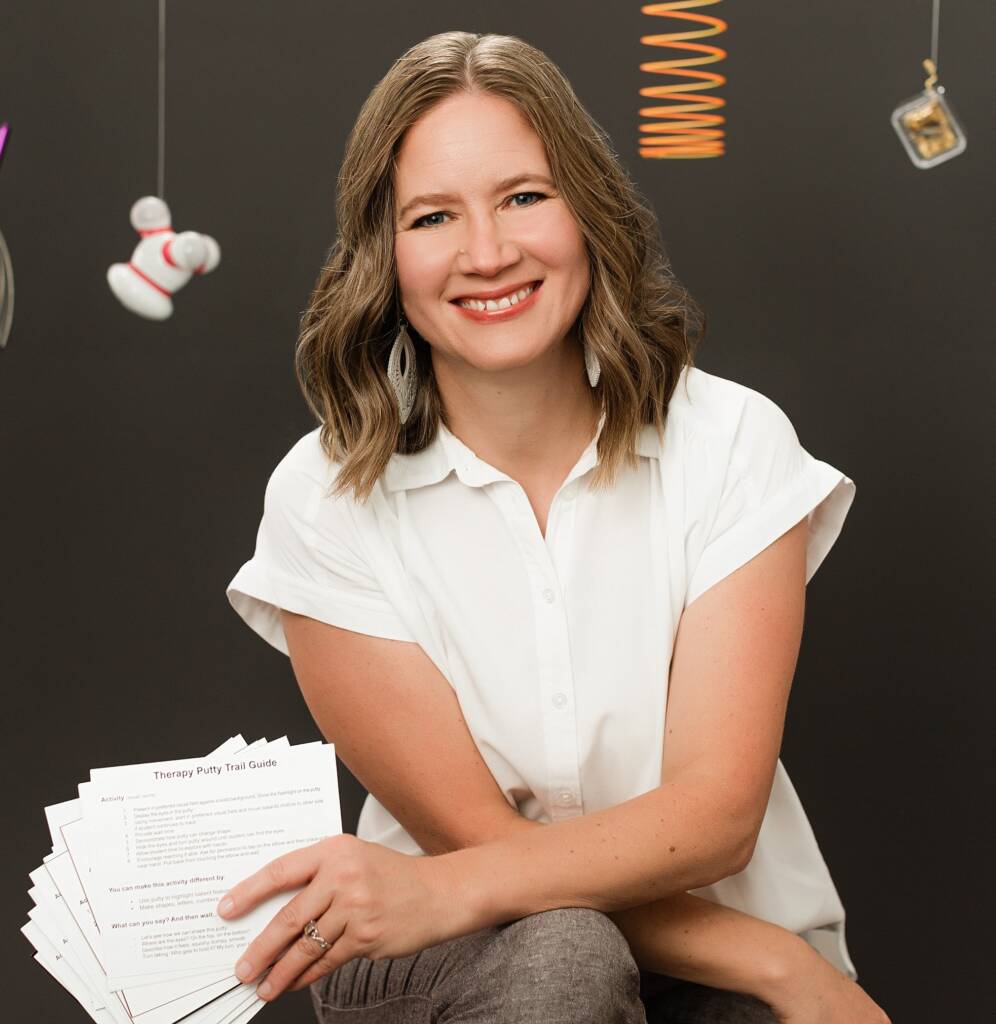
This fundamental belief is at the core of the VistaQuest BaseKit resource. The BaseKit does focus on visual attention, but purposefully includes a multi-sensory approach with all activities to work on those compensatory skills of listening, touching, smelling. It is important to note that the objects in the kit should be integrated into a meaningful routine rather than just using for visual attention alone. TVI’s will need to help develop their own systems that work for each student to create meaningful routines that will then build visual recognition. The Trail Guides and Trail Routes are full of examples of routines and ways to make each activity meaningful. There is also “The Big Picture” section in the manual that goes over how meaningful routines were created for three students from using this resource.
High expectations, built for success, and built for interaction and communication with one’s environment ultimately delivering progress, whatever that may look like, is at the base of the VistaQuest BaseKit.

